Pre Purchase Inspection (PPI)
by Greg GellasOften times cars will come to me brand new, whether it be for Paint Protection Film or the client is wanting a protective coating to allow for easier washing and to help protect the paint. As a detailer, I am often faced with damage that isn’t “normal” on a new car. By normal I mean excessive or negligent in the pre-delivery detail/prep. I then have to document and inform the owners of this damage. This is why a pre-purchase inspection is important when buying a new or used car.
Many times bringing this damage to the attention of the seller/dealership will infuriate them, and they will come up with some absurd reasoning as to why there is damage to the car. I have heard it all, from the dealership insisting that my photos were photoshopped, that I had caused the damage, or that it’s “just normal”. One dealership was even went as far as to claim, “It is not recommended and does have potential to void a warranty claim should there be a future paint issue.” This is another reason why documenting your work as a detailer is important, but that is for another article.
If you have found issues, it may be better to not have the dealership fix them. Chances are, they caused these issues from the start and can often times only make them worse or even add additional damage.
Here are some excerpts of emails some of my clients have received from dealerships:
“He has been working on micro-polishing your car since you left. This is far beyond the normal commercial standard, but again I want nothing more than to see you happy so I am happy to go to this great length.”
“Once the car is stripped down there will be issues needing correction. This is the reality of factory paint and is not a paint problem. I don’t need witnesses to the issues he pointed out, I see them. That said, this is normal. I can strip any car on my lot and discover the same. I am wet sanding and polishing the car today and it will look and wear perfectly.
If you strip it again, it will reveal micro blemishes…”
I disagree with these statements. A properly polished car does not need fillers to hide the damage. I have seen many new cars come to me that didn’t need a lot of polishing, and others that need 2 and 3 correction steps. Most paint damage is done at the dealership level and there are a few common issues I see from this dealership detailing.
Scrapes: They can happen, even on a new car. Check all four of your wheel wells and all four corners of your car. These are the most common areas for scrapes.
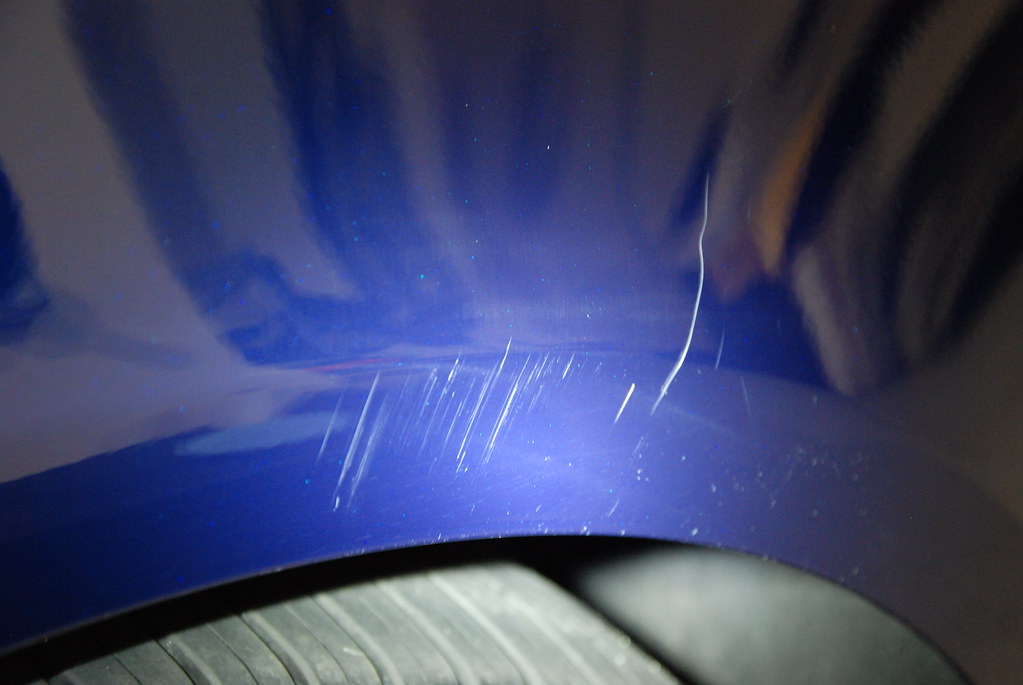
Polisher Damage: This is one that can wreak havoc on the paints finish. The most common damage is buffer trails. If not properly used, a polisher can leave these buffer trails. They appear to be light to deep “halos” or “ghost trails” in the paint. They can been seen from certain angles and not from others, and in different lights.
Light Buffer Trails
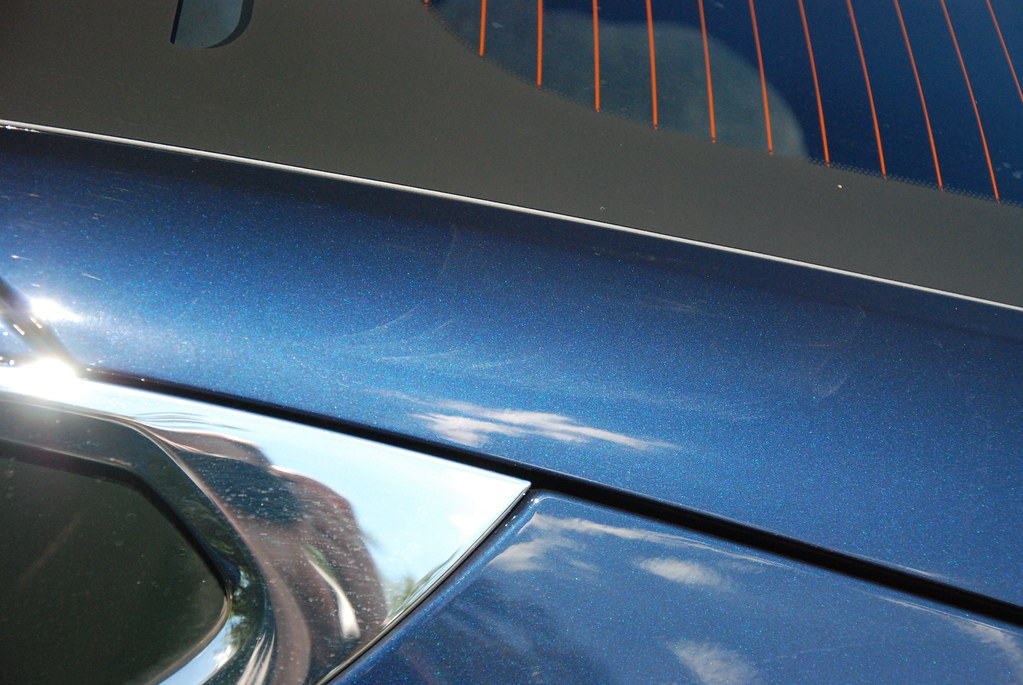

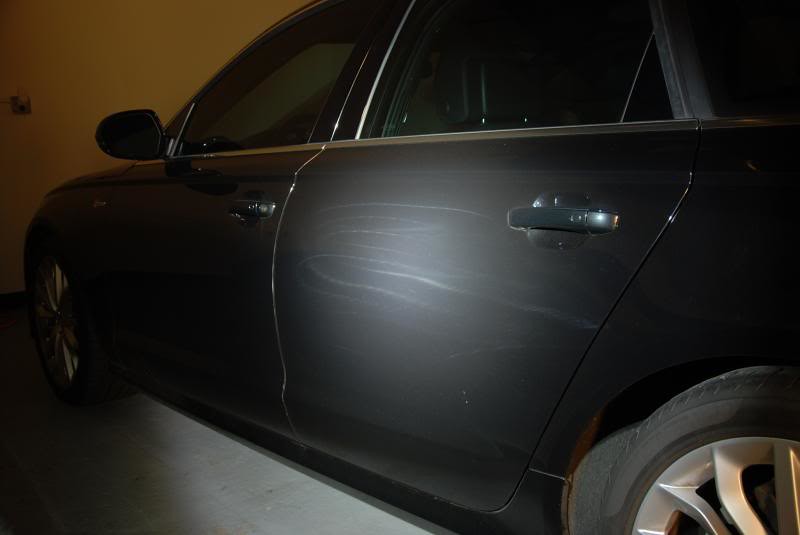
Heavier Damage
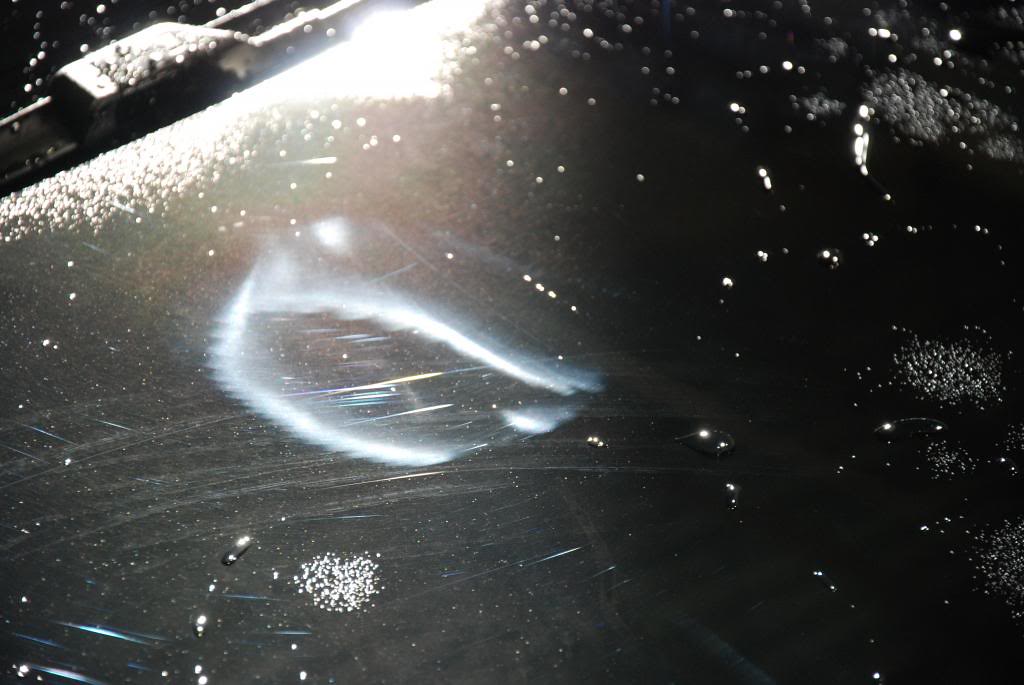
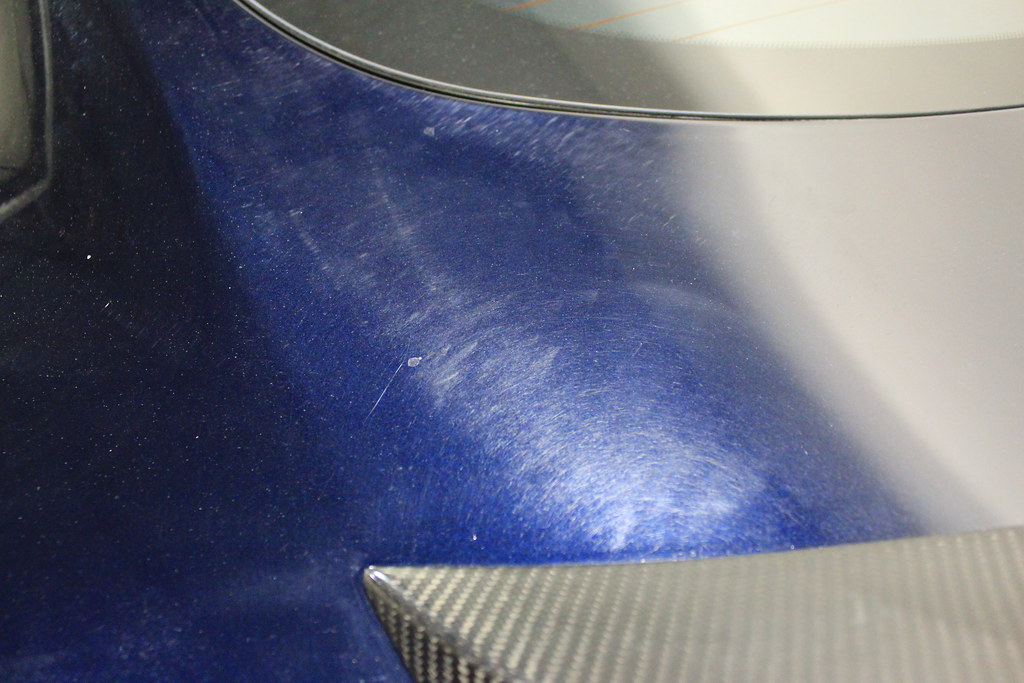
Stained or Burnt Trim: Generally, this is either from the dealership detailer using too large a pad for the area they are trying to polish and/or not taping. A simple piece of tape over trim would help prevent this and using the proper sized pad for that area would also assist in preventing this damage. In this photo, look at lower door trim on the passenger side.
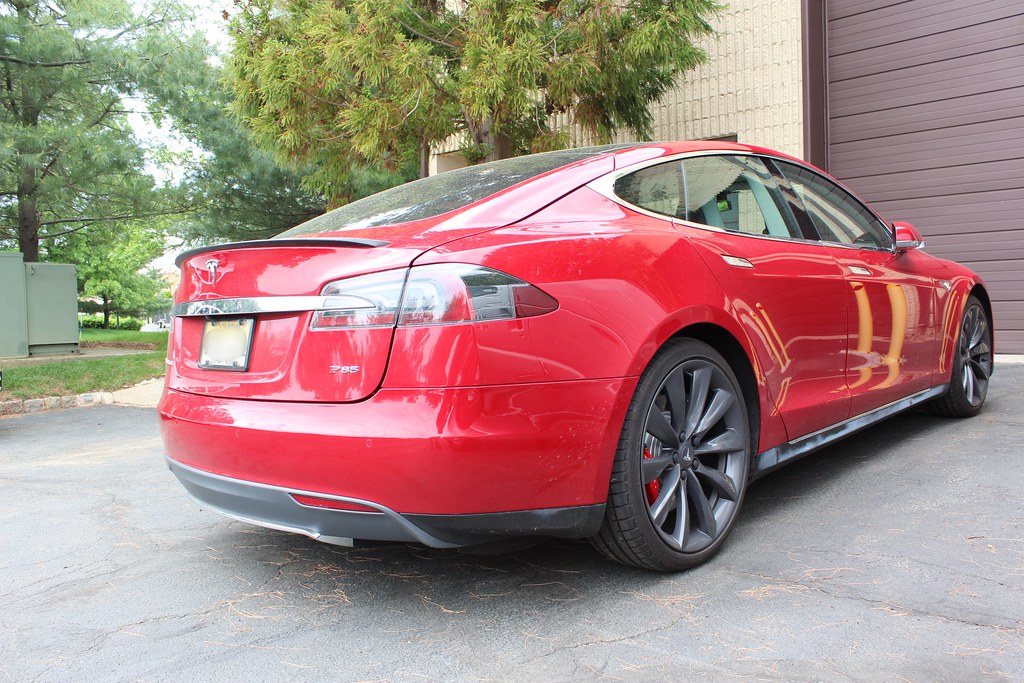
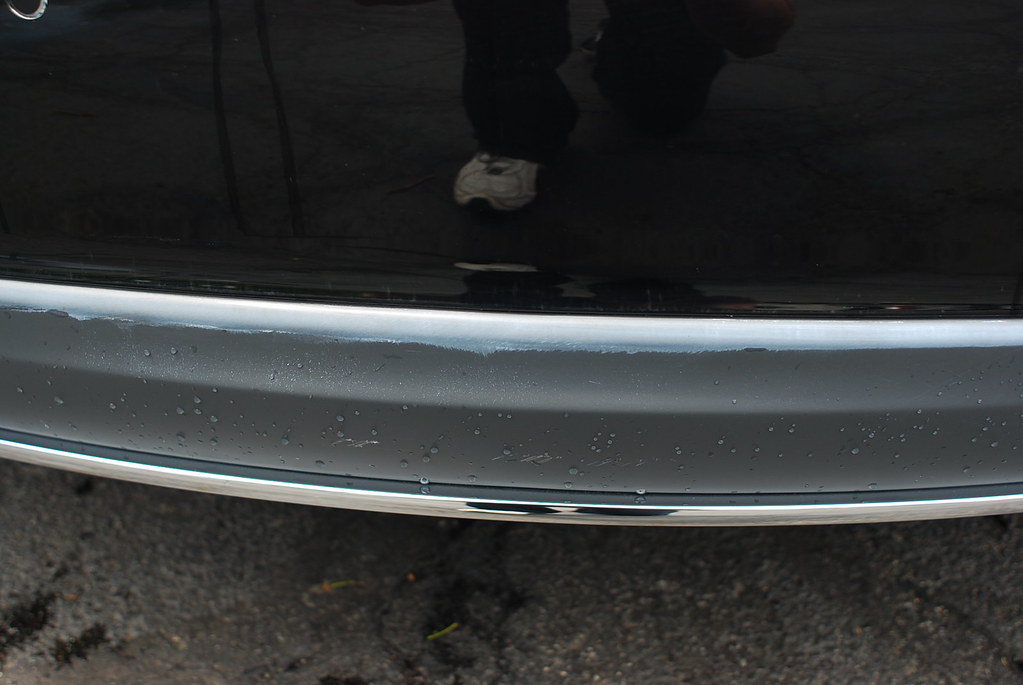
Burnt Edges: This is where the paint is removed from the surface, from either sanding or polishing. While touch ups will improve something like this, it will never be 100% again, short of re-spraying that panel.
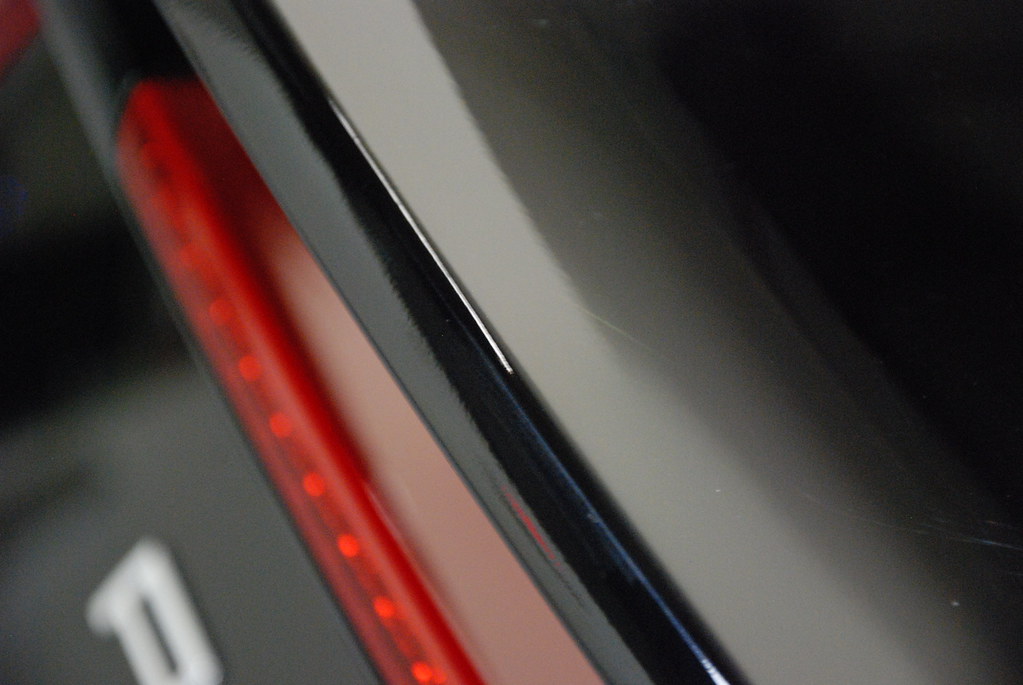
Even if the dealership does offer to fix the car it doesn’t mean they will be doing it properly. As mentioned in a dealership quote earlier, “the entire car was polished up bright and beautiful.” If leaving wet sanding marks throughout the entire surface is considered “bright and beautiful” then this is what one can expect from this particular dealership. These wet sanding marks are something I would later correct.
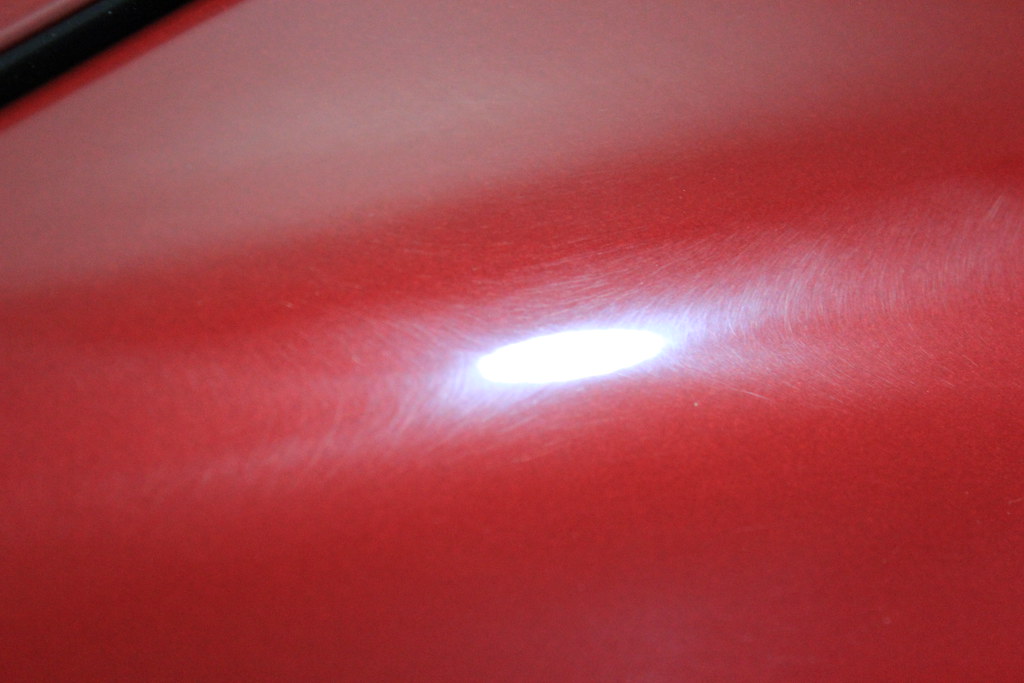
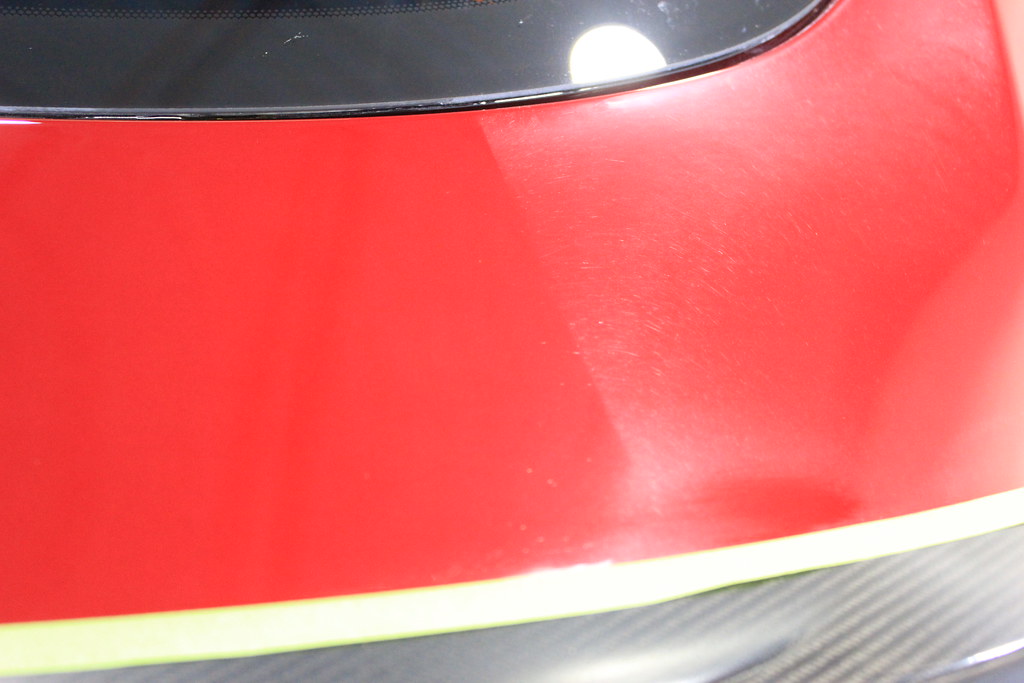
These are just some examples of what damage to look for when purchasing a car. Some damage is more severe and can require a lot more time to repair than others.

To be fair, not all dealerships prep cars with such a delinquent skill set. Many new cars I see come in do not have close to this much damage, and others are “trashed”. This is why we say even a new car can use a professional “detail”. If you’re in doubt about the car you plan on purchasing, contact your detailer. I have many times loaned my DFT Paint Thickness Gauge to customers who planned on bringing me their car after having purchased it. I have even gone myself to inspect and document damage on a vehicle before my client purchased the car. This is the least I can do as a detailer if my client is purchasing a new car and bringing it right in to me for my services.









Excellent article, Greg! I’m going to bookmark this one for potential clients! I can’t count how many times I’ve heard the “it’s a new car, it doesn’t need to be polished”.
PLEASE tell me you emailed this to your favorite, friendly service manager?!?
Rasky
Ain’t it the truth!
Well said Greg! Great Article!
Just because it’s “New” does not mean it’s “Right”
Great topic, Greg! I’ve had several potential customers who did not agree with me about their ‘brand new vehicle’ needing correction work… this will be great to share with anyone who is skeptical.
Very informative and to the point. Most consumers are blind to this.
Fantastic article Greg! I’m going to email this to the salesman where we just bought my wife’s car ad the dealer where I get my truck seviced.
Sorry…and and serviced where spelled wrong…lol
Wish you were located closer to me. I would have taken you with me for the final inspection/accetance/delivery of my 2015 Porsche Panamera. So far, I haven’t found any “problems” but it would have given me more peace of mind knowing an expert did the inspection!